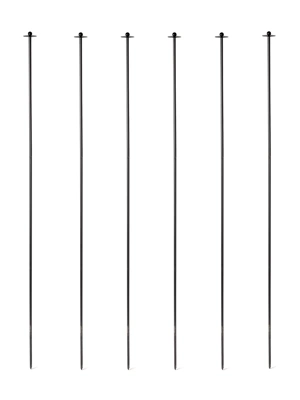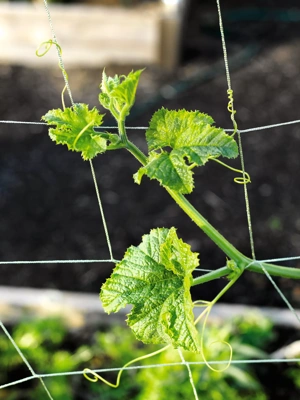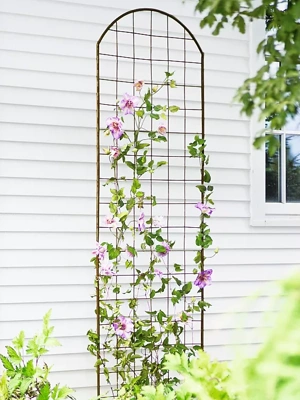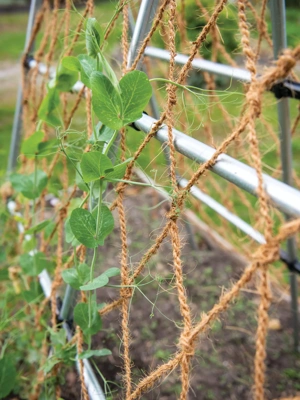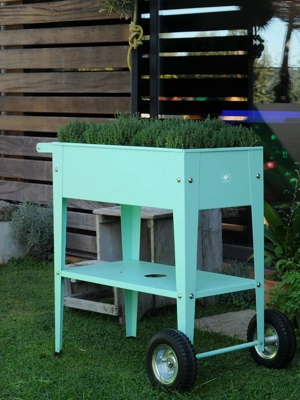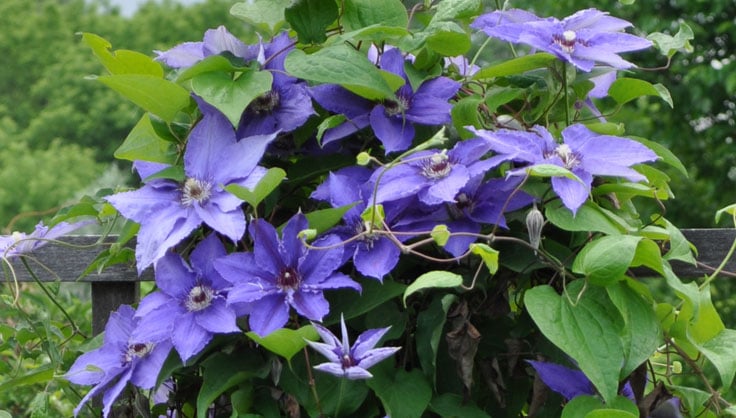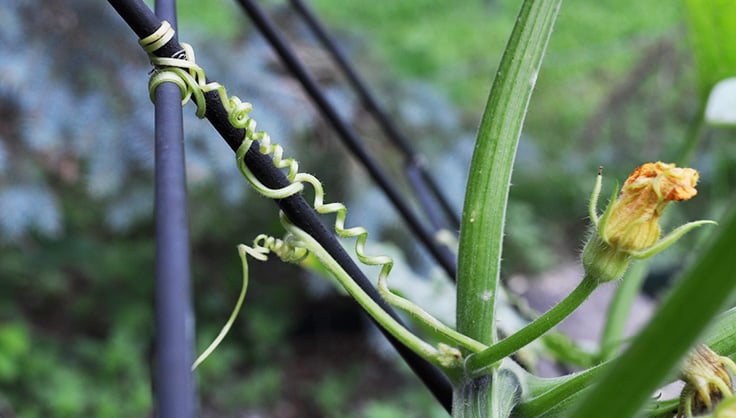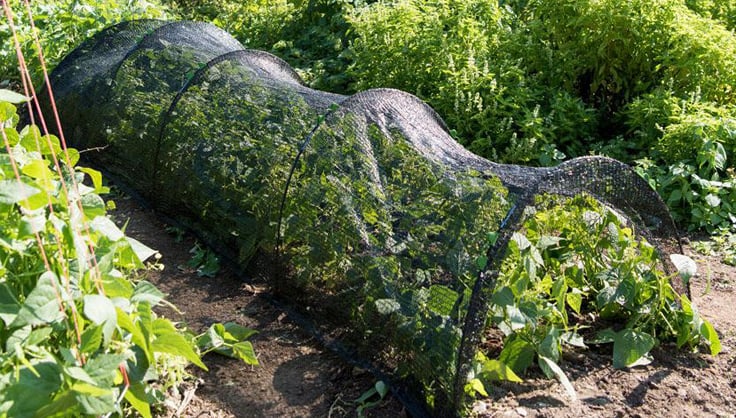Netting Helps Clematis Climb
Clematis use the stems of their leaves to climb. In order to get a good grip, they need something quite thin to grab onto.

This lattice forms the backdrop for the double border in our Vermont display gardens. There are several clematis plants at the base of the lattice, which is too thick for the leaf stems. We’ve added Nearly Invisible Netting to give the vines what they need to climb. By midsummer, the lattice panels are covered with blooming clematis.
Training clematis to grow up a trellis can be tricky. It seems that a lot of the trellises are too thick for the plants to grasp. You need something about a quarter inch or less. Clematis don’t have tendrils or holdfasts (like ivy); they have twirling leaf stems that loop around any support that’s small enough.
But what do you do when you have a beautiful trellis that’s made with material that’s just a bit too thick for clematis? The secret: Nearly Invisible Trellis Netting. Simply cut the plastic netting to a size that fits your trellis and attach it with a staple or twine. The netting blends in quickly and the vine gets the support it needs.
I’ve used it to get clematis to grow on picket fences, rustic cedar trellises, stockade fences, the sides of houses, tree trunks—even up the side and roof of my backyard greenhouse.
Ideally, you attach the netting before the clematis begins growing. However, there have been times when I’ve draped the netting over a vine that’s already started growing vigorously. In short order, the netting is obscured by the now-secure vine. I prefer the Nearly Invisible Netting, but you can also use the Heavy-Duty Deer Fence.
Last updated: 03/14/2024
Print this Article:
Related items
Related Articles
Get the Dirt
Stay up to date on new articles and advice. Please fill out the information below.




